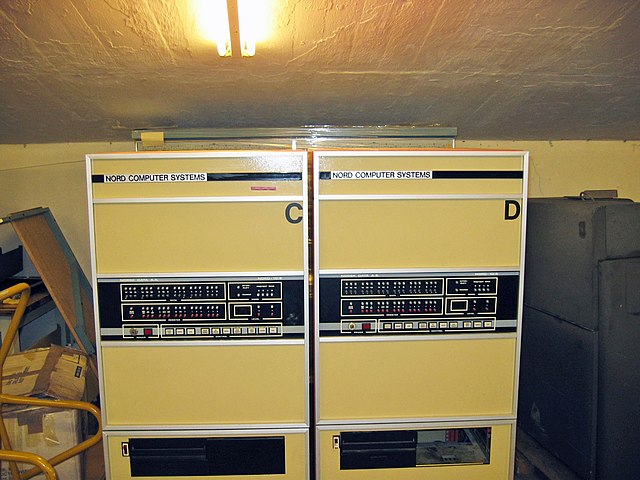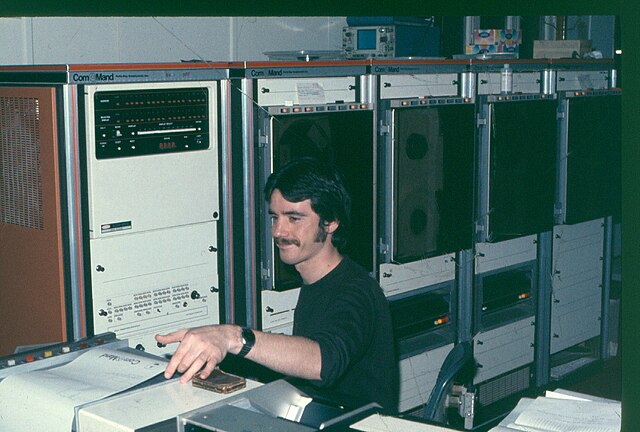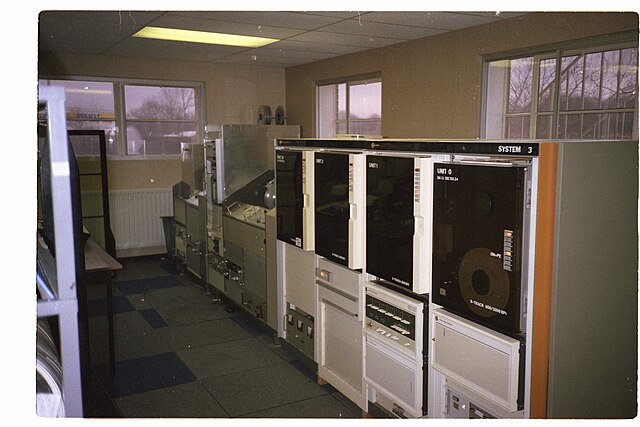Nord-10 was a medium-sized general-purpose 16-bit minicomputer designed for multilingual time-sharing applications and for real-time multi-program systems, produced by Norsk Data. It was introduced in 1973. The later follow up model, Nord-10/S, introduced in 1975, introduced CPU cache, paging, and other miscellaneous improvements.
Two adjacent NORD-10/S systems
A minicomputer, or colloquially mini, is a type of smaller general-purpose computer developed in the mid-1960s and sold at a much lower price than mainframe and mid-size computers from IBM and its direct competitors. In a 1970 survey, The New York Times suggested a consensus definition of a minicomputer as a machine costing less than US$25,000, with an input-output device such as a teleprinter and at least four thousand words of memory, that is capable of running programs in a higher level language, such as Fortran or BASIC.
Six different minicomputers (out of many more models) produced by the Digital Equipment Corporation (DEC) with the year of introduction in brackets: First row: PDP-1 (1959), PDP-7 (1964), PDP-8 (1965); second row: PDP-8/E (1970), PDP-11/70 (1975), PDP-15 (1970).
Data General Nova, serial number 1, on display at the Computer History Museum
Raytheon RDS 500 seismic processing system in Benghazi in 1978
Varian Data Machines system connected to analogue tape playback system in 1984





